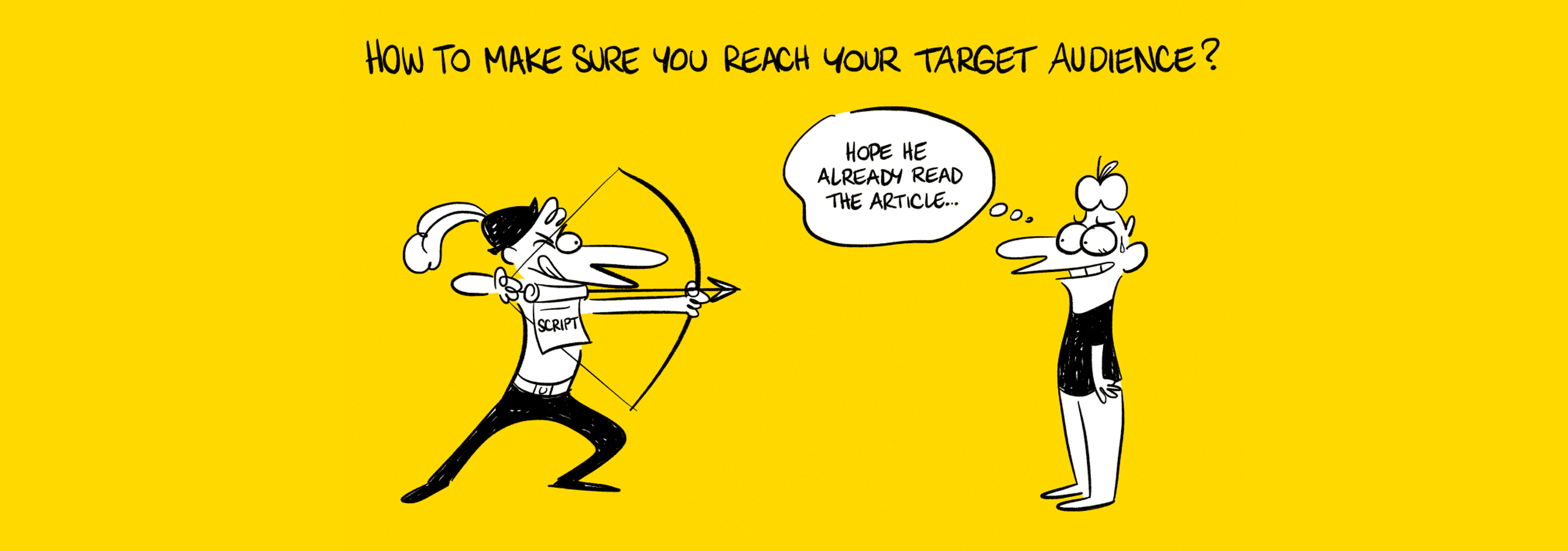Have an idea for a video? Before launching into production, there are a few things to keep in mind to make sure that you effectively reach your target audience.
Here is a short checklist for for scripting an impactful video:

Be relevant. Ask yourself what the viewer will get out of your video. Remember that whatever your messages may be, they will only be received if they are relevant to your audience.
Depending on the context, relevance has many different aspects. Here are a few key aspects:
- Awareness and engagement: check how much your audiences know about your company/project/campaign/product (awareness), and if/how they are already interacting with it (engagement). This will help you assess what type of information you need to provide, and at what level you need to convince them. Check if the audience is internal or external, and how that impacts these parameters (for instance, a video on health in the workplace will trigger different expectations when sent by your employer than when stumbling upon it on YouTube).
- Information, entertainment and self-promotion: viewers need an incentive to view a video promoting something. To make it relevant enough for them to keep viewing, they need to be able to learn something, be entertained or do something useful as a result (apply for a job/contribute to a good cause/spread the message on something important/attend an event…).
- Social, traditional or face-to-face: video consumption also depends on the place where it occurs. Audiences and surfing habits change from one platform to another and video content needs to be adjusted accordingly.

Be clear. While your content/messages may be technical, it’s important to express them in words your target audience can easily understand.
That means simplifying and explaining as much as you can, keeping it interesting and practical through the use of concrete examples and stories, getting rid of jargon where possible. To put this in practice, ask yourself:
- What details you can cut without losing the message
- If there are ‘plain English’ synonyms for technical terms
- If not, if an example or a short explanation will help to make it more concrete

Be concise. This does not always mean keeping it short: the longer the format, the more the viewer/reader needs to get out of it.
There is no absolute rule regarding recommended length as this will depend on many elements:
- A training video will most likely be longer than an ad
- People consume different types of formats on different channels
- How much you can shorten/break up into shorter clips depends on the content and messages
- Etc.
As a rule of thumb, promotional videos should be shorter at around 90 seconds, while YouTube clips with information and entertainment generally perform well with a duration of under four minutes (this is the average length of the most shared videos on YouTube). Instagram stories should be just four to six seconds long (with an absolute limit of 15 seconds).

Get to the point – quickly. Attention spans are short and you lose viewers with every second of video. To engage them from the start, try to grab their attention immediately.
This can be achieved by arousing their curiosity (teasing fresh info/good to knows/fun facts…) or using storytelling to appeal to emotions.
This technique should be applied to the opening part of the video (first minute), but also to the title and accompanying description.
